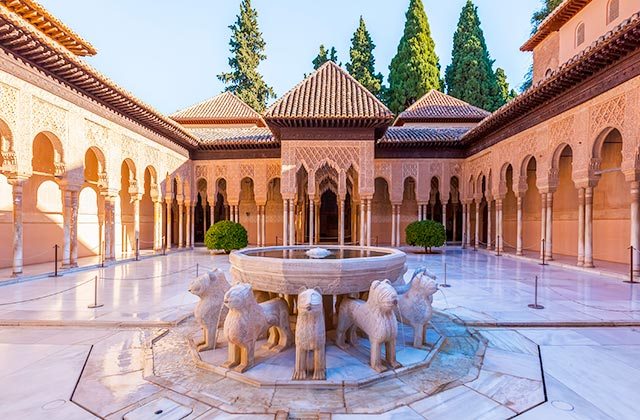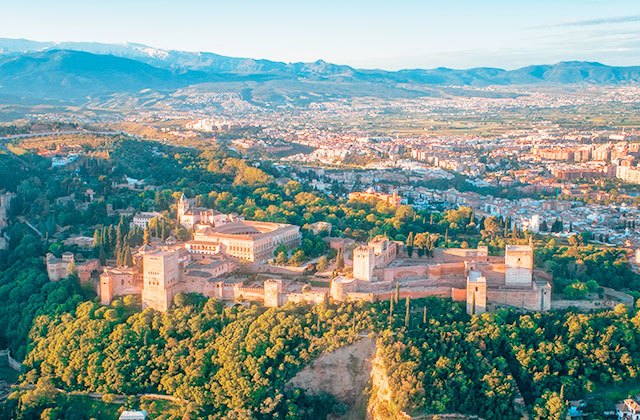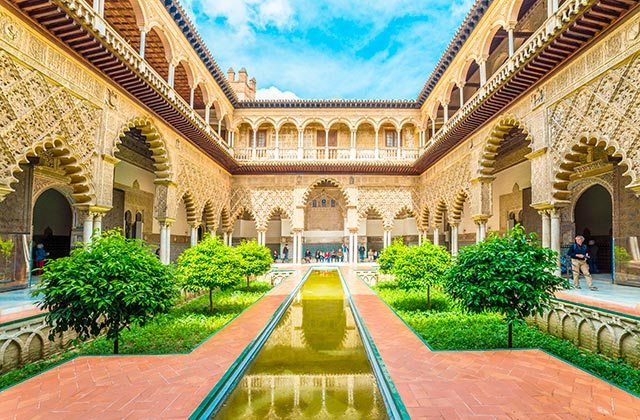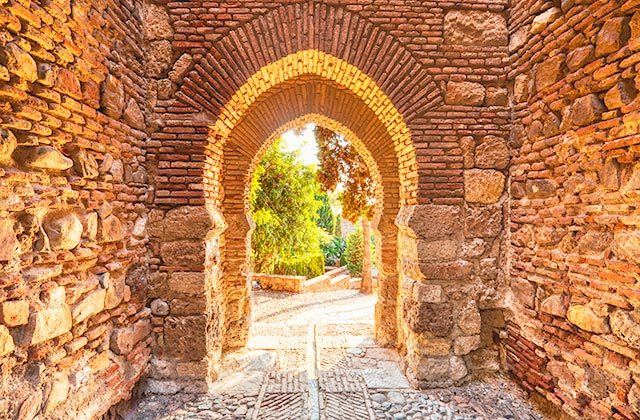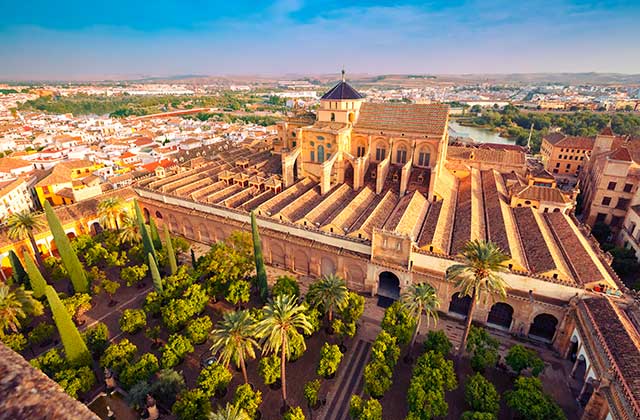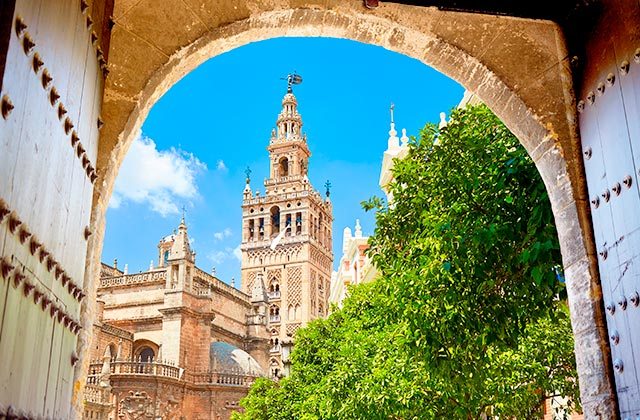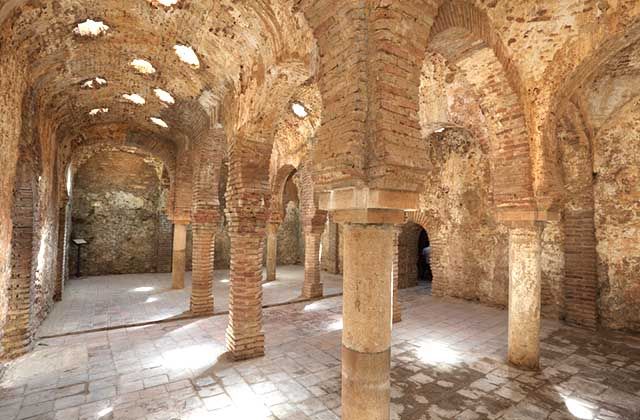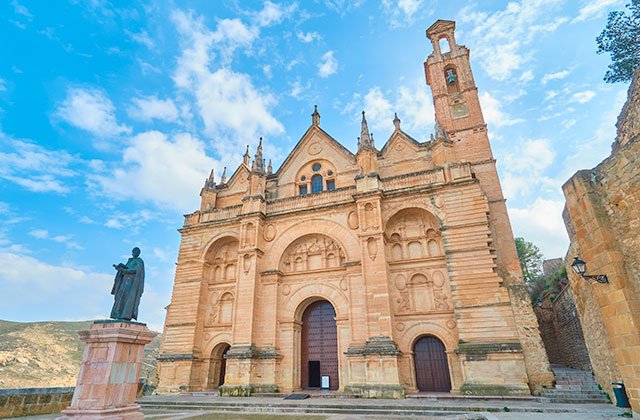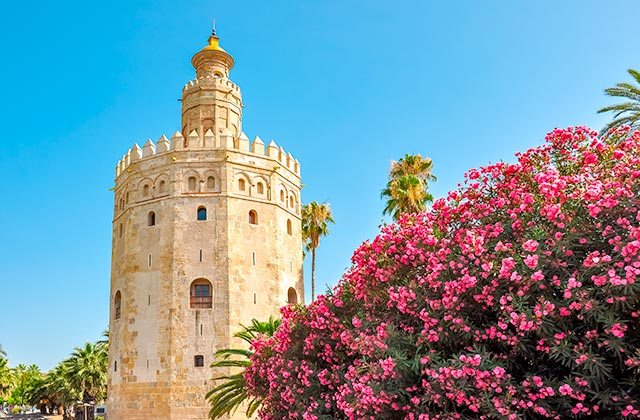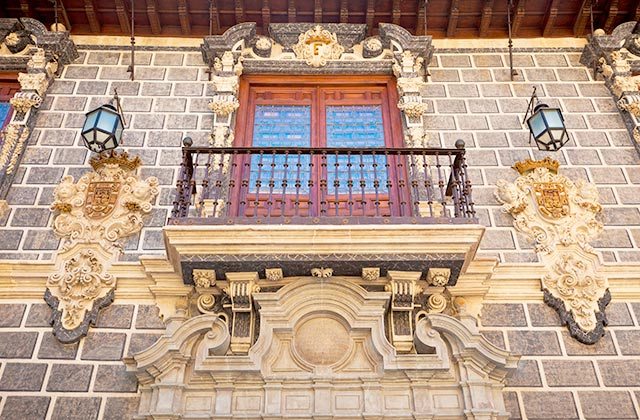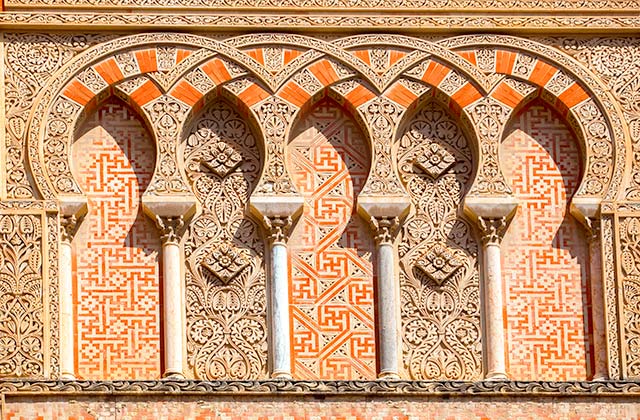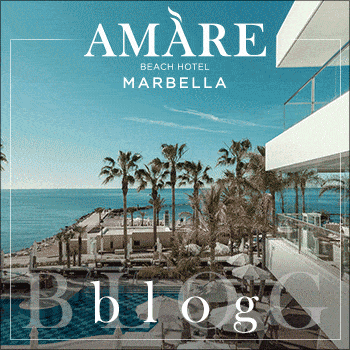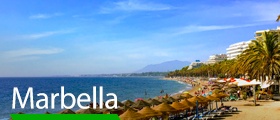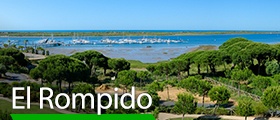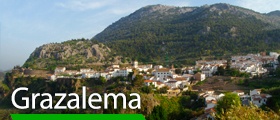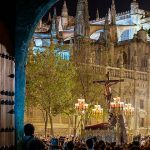
The Arabian Route through Andalucia allows you travel back in time to Al-Andalus
Andalucia is a region rich in artistic and cultural heritage and visiting its cities is the best history exercise that any lover of the humanities and the arts can do. One of the periods of splendour that has marked the Andalucian character, cuisine, music and the architecture of its buildings has been, without doubt, that of Al-Andalus (711 to 1492).
The Arabic roots of southern Spain are studied worldwide and the buildings which adorn the streets evoke its Caliphate past. If you want to dive into an “Arabian Nights” tale, follow this route and take note of this route through Muslim Andalucia. See the most important monuments and dive into this unique world through its most important remains.
Al-Andalus in Andalucía
1. The Alhambra (Granada)
Granada was the last Muslim territory remaining in Spain until 1492 when the Moorish king Boabdil surrendered the Islamic jewel to Christianity. The Alhambra is an Andalucian palace city which is one of the most visited and best preserved monuments in the world. Dive into its Andalucian style pillars and arches with quotations from the Koran, enjoy the Patio de los Leones with decorated wooden domes which are supported by mocárabe pendentives and, most importantly of all, walk through its incomparable gardens. Imagine this architectural complex in the Middle Ages and its peoples dressed in Eastern fabrics wandering the streets. If at the end of the day you still have time, come to the Mirador de San Nicolás, also in the Arab quarter of El Albaicín, where you can watch the best sunset in Spain overlooking the Alhambra.
2. Medina Azahara (Cordoba)
Medina Azahara is a palatial city located on the outskirts of Córdoba. Although its role was administrative and political, legend has it that the caliph Abd ar-Rahman III ordered its construction in honour of his favorite wife, Azahara. Built on a slope, the city is divided into three superimposed terraces. Here you will find stunning places like the Halls of Ambassadors, the Military Barracks or the Great Gate. In the Eastern Room, given the name of the caliph, are the most brilliant examples of Islamic art in this architectural complex. Here you can see the Caliphate horseshoe arch with bicolour polychrome and the characteristic alternation of reddish and flesh-coloured segments. An unmissable trip to the past if you visit Córdoba.
3. The Alcázar of Seville
The Alcázar of Seville is a group of palaces surrounded by a wall. As it was made, different styles have been used throughout its history, from the Islamic style of its first inhabitants, to Mudéjar and Gothic after the conquest of the city by the Spanish troops. Successive reforms have added Renaissance and Baroque elements, exposing the melting pot of cultures that lived in southern Spain. If you come to this place, prepare your senses and especially enjoy its gardens. Vegetation was a key element in Muslim heritage buildings which have survived to this day. This is currently the residence of the Spanish monarchs on their visits to Seville, and is the oldest active royal palace in
4. The Alcazaba of Malaga
In the heart of Malaga, the Alcazaba stands majestically, a palatial fortress from the Muslim era, built on a former Phoenician site. This monument is the prototype of military architecture from the Taifa period, the 11th century, with its double walls and numerous fortifications. Among horseshoe arches and gardens, if you visit the Alcazaba, you will climb throughout your journey until you reach a point where the Mediterranean sea in the background becomes the star. An unforgettable experience that you have to experience first-hand on this Muslim route.
5. The Mezquita (Cordoba)
One of the most important examples of Islamic architecture in Spain is located in Córdoba. The Mezquita (mosque), which is now a Roman Catholic cathedral, is universally recognized due to its 850 arches and its granite, jasper and marble columns, supporting the roof of the building. Here you can get lost in the immensity of its aesthetics, made grand on purpose to reflect the omnipotence of Allah. This network has a double arch, one Romanesque medium point over another Caliphate horseshoe point, inherited from the Visigoths, mixing the reddish and flesh-coloured segments. Close your eyes and open them and transport yourself back to the days of the Caliphate of Córdoba.
6. La Giralda (Seville)
La Giralda is now the bell-tower of the Cathedral of Santa Maria in Seville, although its origin, as in many other examples, comes from the Andalucian Arabic era. With an Almohad style, the lower two thirds of the tower are the minaret of the old mosque of the city. With the arrival of the Christians, they built a bell tower on top with a figure that doubles as a weather vane called Giraldillo, which was the largest bronze European Renaissance sculpture and gives its name to the tower. La Giralda cannot hide its roots and has a “twin sister” in Marrakech, the minaret of the Koutoubia mosque. Make sure you get a picture with the undisputed symbol of Seville.
7. Arab baths in Ronda (Málaga)
This Muslim era thermal resort is the best preserved on the Iberian Peninsula. It is located in the district of San Miguel, which was once the Muslim Medina in Ronda. Still now, it has retained virtually all the entire hydraulics in the baths which were divided into cold, warm and hot water rooms. The building is surrounded by a wall of blind arches which form the aqueduct, and it has a tower in the background with waterwheel. Similarly in good condition now are the boiler area, where the water was heated, and the remains of the tanneries, the main activity at the site once the baths were abandoned after the Christian conquest of the city. Water was an essential element in the Muslim culture of Al-Andalus and is perfectly reflected in this monument in Ronda. Don’t miss this spot and enjoy your time in one of the most beautiful cities of Málaga.
8. Alcazaba and Real Colegiata de Santa María in Antequera (Málaga)
The Alcazaba and Royal Collegiate Church of Santa María in Antequera is a clear example of the fusion of cultures. During the Reconquista, the Christians transformed Muslim monuments into Catholic churches or built them near to their great shrines to show what they called “the supremacy of their faith.” Here is the Alcazaba, a symbol of Islam, next to the Royal Collegiate Church of Santa Maria, the first columnar church built in the region. We recommend walking around the vicinity of both monuments and, above all, make sure you don’t miss the spectacular view of the beautiful city of Antequera.
9. The Torre del Oro (Seville)
Of Almohad origin, the “Tower of Gold” is another symbol of Seville. This monument has a dodecagonal base and blocked the way to Arenal with a section of wall that connected with the Torre de la Plata (“Tower of Silver”), which formed part of the walls of Seville which defended the Alcázar. Take a stroll through this environment, enjoy the reflection of this Arabic vestige in the waters of the river Guadalquivir and take a photo in every corner of extreme beauty offered by this unique place.
10. The Madrasa of Granada
The madrasa was the first university in Granada where, during the Moorish period, law, medicine and mathematics were taught, amongst other subjects. It is currently still a university area dedicated primarily to cultural events. Come and behold the beauty of Islamic architecture with inscriptions in Arabic such as that which states: “If in your spirit you provide a place for the desire to study and to flee from the shadows of ignorance, you will find in it the beautiful tree of honour. Make study shine like stars to the great, and to those who are not, bring to them the same brilliance.” After visiting the Madrasa, go to the Alcaicería, an old Arab market which still retains the essence of its splendour.
Interesting facts
Al-Andalus, the region that encompassed most of the Iberian Peninsula during Muslim rule in the Middle Ages, is a fascinating part of history. Here are some interesting facts about Al-Andalus:
- Etymology: The name “Al-Andalus” is derived from the Vandals, a Germanic people who invaded the Iberian Peninsula in the 5th century. The term was used by Muslims after their conquest of the region in the 8th century.
- Religious Tolerance: Al-Andalus is known for its relative religious tolerance compared to other parts of Europe during the Middle Ages. Muslims, Christians, and Jews lived together and contributed to a rich mix of cultures, known as “convivencia.”
- The Mosque-Cathedral of Cordoba: One of the most iconic structures in Al-Andalus is the Mosque-Cathedral of Cordoba. It began as a mosque in the 8th century and was converted into a Christian cathedral in the 13th century, reflecting the changing history of the region.
- Scientific and Cultural Advances: During its heyday, Al-Andalus was a hub of advancements in medicine, mathematics, philosophy, and other disciplines. Many classical Greek and Roman texts were translated into Arabic and preserved in this region.
- The Book of Marvels: Andalusian geographer Al-Idrisi created the “Book of Marvels,” a work that described the known world in the 12th century and influenced medieval cartography.
- The Alhambra: The Alhambra palace in Granada is one of the most impressive examples of Islamic architecture in Spain. Its intricate designs and gardens are a feast for the eyes.
- Architectural Innovations: Architects in Al-Andalus developed advanced techniques in architecture, such as the use of horseshoe arches, ribbed vaults, and complex geometric designs in mosaics and tiles. These elements influenced Islamic architecture worldwide.
- Andalusian Gardens: Andalusian gardens are known for their beauty and meticulous design. Characterized by fountains, ponds, lush vegetation, and decorative elements, these gardens testify to the importance of aesthetic pleasure in Andalusian culture.
- Culinary Contributions: Andalusian cuisine left an indelible mark on Spanish cuisine. They introduced ingredients like rice, oranges, lemons, sugar cane, and spices, which are now fundamental in Spanish cooking.
- Chess: The game of chess, as we know it today, developed in Al-Andalus and spread through the Islamic world to Europe and Asia.
- Poets and Writers: Al-Andalus was home to many prominent poets and writers, such as Ibn Hazm, Ibn Zaydun, and Averroes. Their works in poetry and philosophy had a lasting impact on European literature.
- Fall of Al-Andalus: The Reconquista, a centuries-long process in which Christian kingdoms gradually regained control of the Iberian Peninsula, culminated in the fall of Granada in 1492, marking the end of Al-Andalus.
Archaeological sites that will transport you to Andalucia’s Roman Empire
ACCOMMODATION

Hotel Fuerte Conil Resort
If you want to follow this cultural guide which will submerge you in the Muslim era in southern Spain, we recommend staying at Fuerte Hoteles. The chain has stores near all these places which seem taken from the “Arabian Nights” and you will be transported back to Al-Andalus. Hotels and apartments with excellent service and quality according to Tripadvisor, and supported by over 60 years of experience, they are the best choice for unwinding and living this historical and cultural experience.
